Shared with the 4th, 11th and 12th arrondissements, the Place de la Bastille is one of Paris’ most famous squares, owing its name to the infamous fortress that once stood there. The vast square (215m by 150m) was the scene of many revolutions which had significant consequences on the history of France: 1789, 1830 and 1848. The Place de la Bastille remains the French capital’s most crucial rallying point for demonstrations, marches and public celebrations.
🎦 Watch our short video on the origins and traditions of Bastille Day:
Place de la Bastille: A Bit of History

The square was built on the Bastille fortress’s site and Charles V’s fortifications (as shown on the map above). It marked the limit between Paris and the ‘faubourgs’.
On the 14th of July 1790, entrepreneur Palloy organised the first popular dancing ball on the occasion of the Fête de la Fédération. Amidst the ruins of the former prison, he planted a tent with the sign: ‘Ici on danse’ (here, people dance). This tradition has survived to the present day.
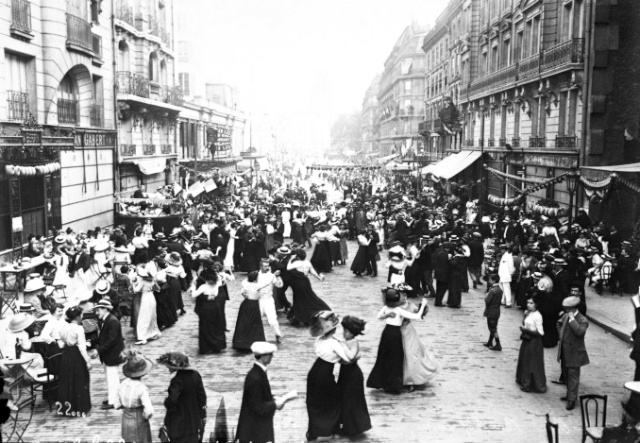
The square welcomed the infamous guillotine from the 9th to the 14th of June 1794. 75 people were beheaded on the Place de la Bastille before the guillotine was moved to the current Place de la Nation.
The square has changed appearance since the demolition of the Bastille prison (1789-1790), the construction of the July Column (1840), the great urban renovation of Baron Haussmann (mid-19th century), the demolition of the railway station (1984) and the inauguration of the modern Opéra-Bastille (1989).
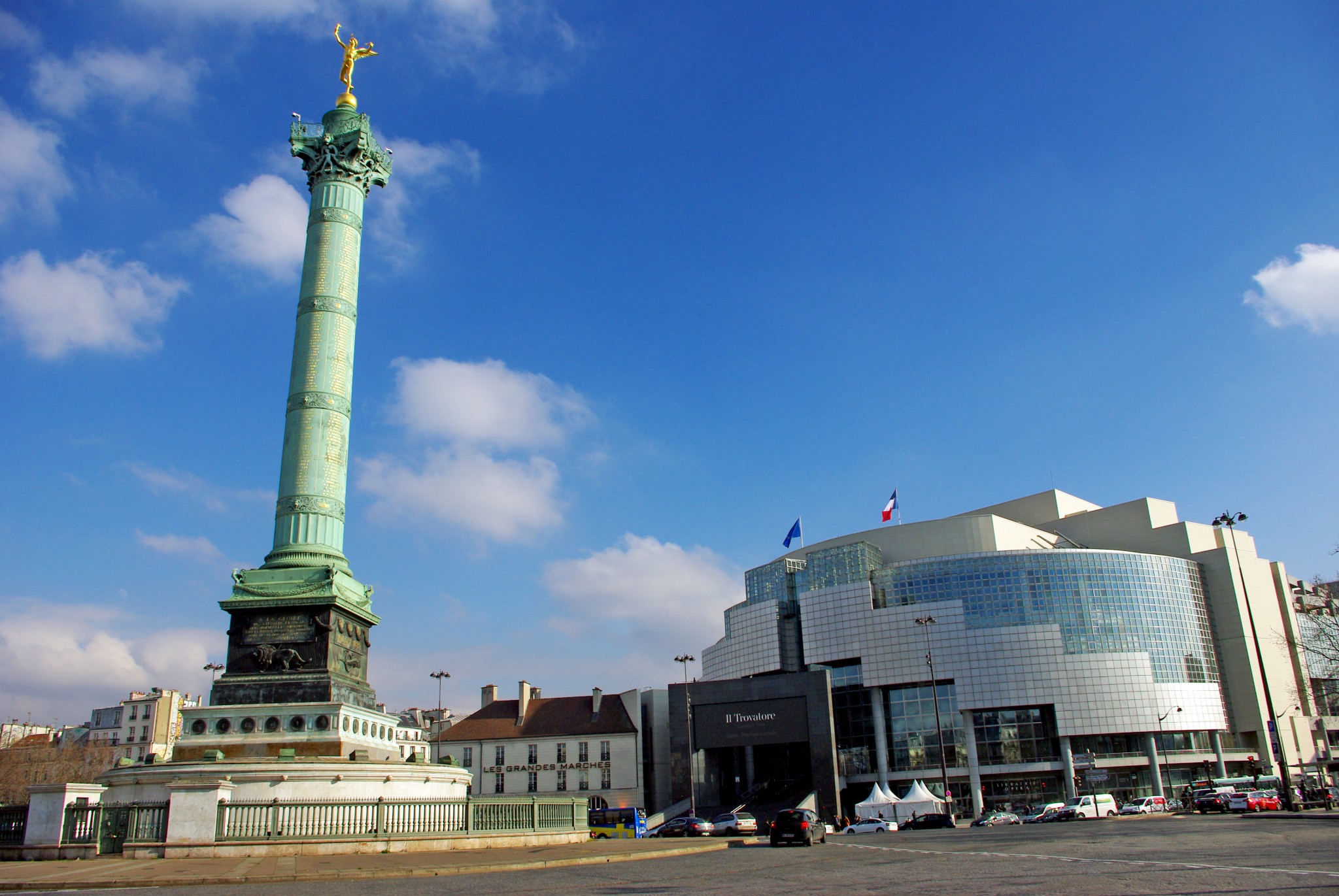
The Bastille Fortress

The Bastille was a fortification on the medieval wall of Paris built under the reign of Charles V between 1370 and 1383. Cardinal Richelieu transformed The fortress into a prison and kept political prisoners such as Voltaire and the Man in the Iron Mask.
The fortress was stormed by a revolutionary mob from the Faubourg Saint-Antoine on the morning of the 14th of July 1789. By late afternoon its seven prisoners were freed. This first act of the French Revolution quickly became an important date in French history.
The fortified prison was dismantled between the 14th of July 1789 and the 14th of July 1790, and its stones were partly used to build the Pont de la Concorde. 83 of its stones were carved into miniature Bastille replicas before being sent to the provinces.
Today, the ground plan of the Bastille’s towers and fortification can be seen on the pavement on the square’s western side (from numbers 5 to 49 Boulevard Henri IV).
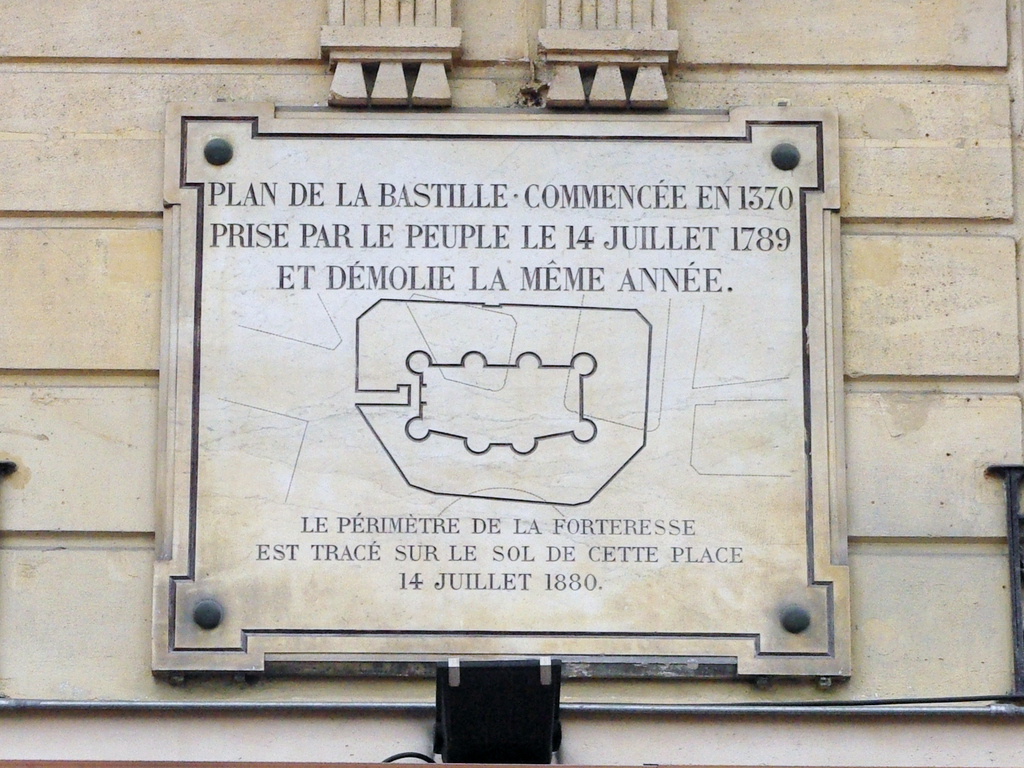
Monuments on the Place de la Bastille
The Place de la Bastille is home to two monuments of Paris: the July Column and the monumental Paris Opera. The square opens to the Arsenal Harbour.
The July Column – la Colonne de Juillet
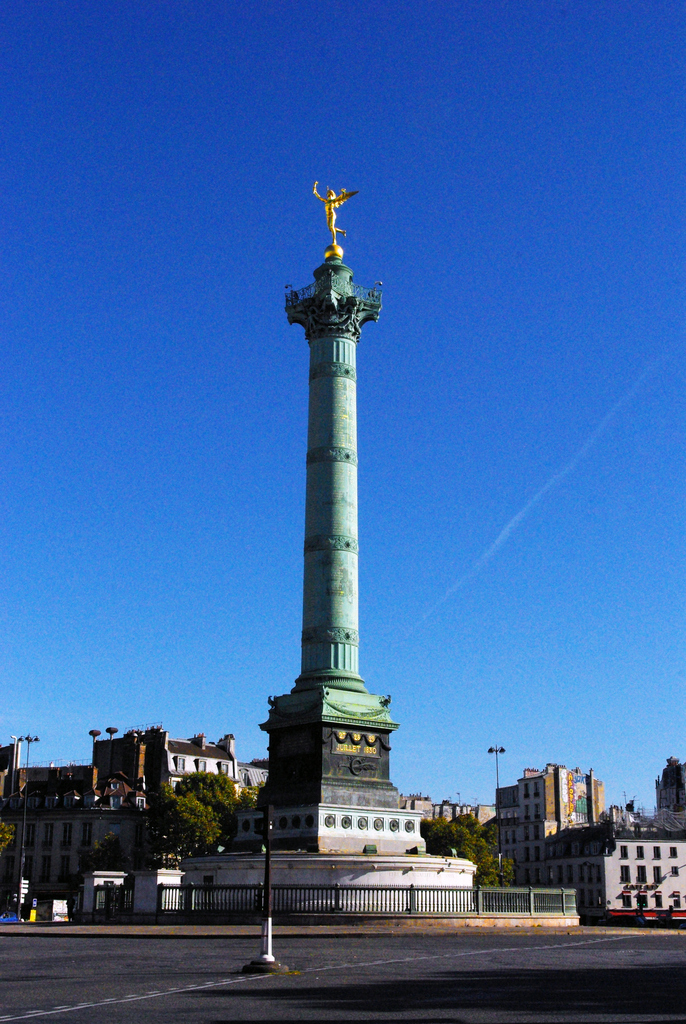
The monumental July Column (in French: Colonne de Juillet) was commissioned by Louis-Philippe in 1830 and inaugurated in 1840. The Corinthian-style column is 50.52 metres tall and was designed by architects Jean-Antoine Alavoine and Joseph-Louis Duc. A stair with 140 steps leads to the viewing platform (close to the public_. It is made of 21 bronze drums and weighs over 74 tonnes.
Its name refers to the Trois Glorieuses or the Three Glorious Days of 27-29 July 1830, when King Charles X was overruled by the ‘July Monarchy’ of Louis-Philippe.
A commemorative plaque bears the inscription:
“À la gloire des citoyens français qui s’armèrent et combattirent pour la défense des libertés publiques dans les mémorables journées des 27, 28, 29 juillet 1830.”
(To the glory of French citizens who armed themselves and fought to defend public freedoms during the memorable days of the 27th, 28th, and 29th of July 1830).
At the top of the column stands a gilded angel by Auguste Dumont called ‘le Génie de la Liberté’ (Spirit of Freedom). The statue holds the torch of civilisation and the remains of his broken chains.

The monument was built above a necropolis, including the 815 bodies of revolutionaries killed during the Trois Glorieuses and the 1848 Revolution.
The July Column is visible from many vantage points in Paris: from the Sacré-Cœur in Montmartre, the Père Lachaise cemetery, the towers of Notre-Dame, the Montparnasse Tower or the Institut du Monde Arabe:
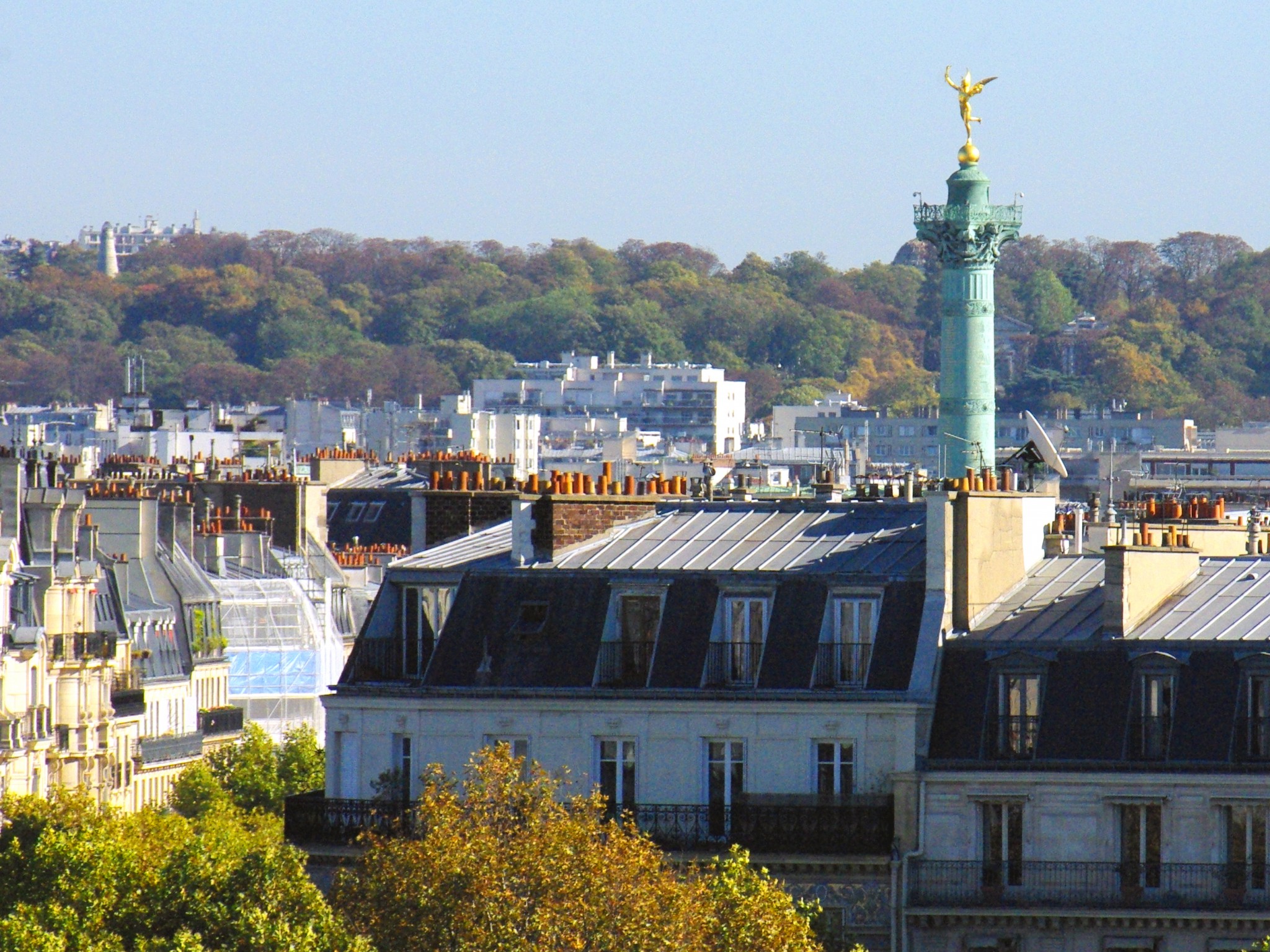
The Bastille Elephant
On the site of the square, Emperor Napoleon Bonaparte wished to edify a curious counterpart to the Arc de Triomphe: the Bastille Elephant. This project was never completed; only the fountain’s circular base remains today.
Interestingly a replica of the monument was raised in Mexico City in 1910: the Columna de la Independencia.
The Opera Bastille
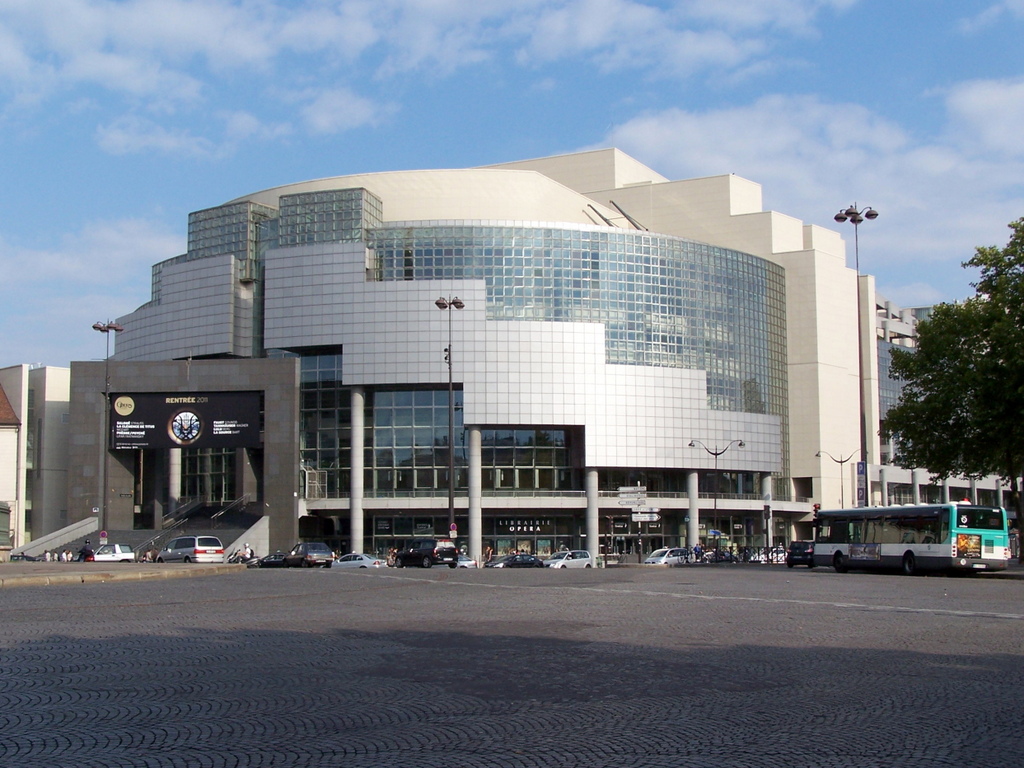
Before the opera was a train station called ‘Gare de la Bastille’. Opened between 1859 and 1969 it linked Paris to Verneuil-l’Étang and Boissy-Saint-Léger. In the mid-1960s construction of the RER A led to the abandonment of the station. The building was demolished in 1984 to give way to an ambitious project: the modern Opéra Bastille. The former railways were transformed into the Promenade Plantée.
The Opéra Bastille is part of François Mitterrand’s Grands Projets, a grandiose plan which included the construction of the Grande Arche de la Défense, the National Library in Tolbiac, and the glass pyramid of the Louvre.
Built between 1984 and 1989, its inauguration by the French President coincided with the bicentenary of the French Revolution. Uruguayan architect Carlos Ott designed the opera, which has a capacity of 3,309 seats.
Port de l’Arsenal

The square gives way to the Port de l’Arsenal, Paris’ marina. The port was the former moat of Charles V’s fortification, and its waters link the Seine to the Canal St Martin.
Find out more on the blog
- On the trail of the remains of the historic fortress of La Bastille
- All there is to know about Bastille Day, France’s national day
- The Gems of Paris: A Discovery Online Course
Stay in and around Place de la Bastille
For accommodation in and around Place de la Bastille, click on this link or browse the map below:



